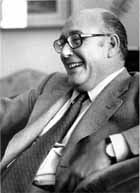Fu deputato alla Camera, nella lista del PCI, come indipendente di sinistra, dal 1976 al 1979, e fu membro della Commissione parlamentare Antimafia. Dopo l'esperienza parlamentare, tornò in magistratura per essere nominato capo dell'Ufficio Istruzione di Palermo.
Per Cesare Terranova il bridge era l'hobby per elezione, è stato un ottimo giocatore, dotato di risorse tecniche notevoli e di una grande capacità di concentrazione, ma, soprattutto, è stato l'instancabile promotore della nascita del bridge palermitano. Socio fondatore del circoletto di via Stabile (il primo insediamento palermitano), fu Presidente dell'Associazione Bridge Palermo e collaborò come consulente tecnico giuridico con il Consiglio Direttivo della FIB.
Il 25 settembre del 1979 verso le ore 8,30 del mattino, una Fiat 131 di scorta arrivò sotto casa del giudice a Palermo per portarlo a lavoro. Cesare Terranova si mise alla guida della vettura mentre accanto a lui sedeva il maresciallo di Pubblica Sicurezza Lenin Mancuso, l'unico uomo della sua scorta che lo seguiva da vent'anni come un angelo custode.
L'auto imboccò una strada secondaria trovandola inaspettatamente chiusa da una transenna di lavori in corso. Il giudice Terranova non fece in tempo a intuire il pericolo. In quell'istante da un angolo sbucarono alcuni killer che aprirono ripetutamente il fuoco con una carabina Winchester e delle pistole contro la Fiat 131. Cesare Terranova istintivamente ingranò la retromarcia nel disperato tentativo di sottrarsi a quella tempesta di piombo mentre il maresciallo Mancuso, in un estremo tentativo di reazione, impugnò la Beretta di ordinanza per cercare di sparare contro i sicari, ma entrambi furono raggiunti dai proiettili in varie parti del corpo.
Al giudice Terranova i killer riservarono anche il colpo di grazia, sparandogli a bruciapelo alla nuca. La sua fedele guardia del corpo, Lenin Mancuso, morì dopo alcune ore di agonia in ospedale.
La moglie Giovanna, è stata una figura di spicco nella guerra alla mafia ed è stata la co-fondatrice dell'"Associazione Siciliana delle Donne contro la Mafia".

